
This post may contain affiliate links.
YOU’LL NEED:
- TILE-LOOK CONTACT PAPER
- SCISSORS
- UTILITY KNIFE
- HAIR DRYER
- CREDIT OR GIFT CARD
Starting
I started in the back corner along the longer wall, roughly cutting the vertical length and lining it up with the bottom of my top cabinets as well as I can. I used my hair dryer to provide some low heat and make the paper a little easter to use (see this video showing how to apply contact paper easily). There were more bubbles with this paper than with the black cabinet paper or wood grain countertop, but that may be because they were just more visible on the white paper. I’m sure applying the paper while vertical didn’t help either.
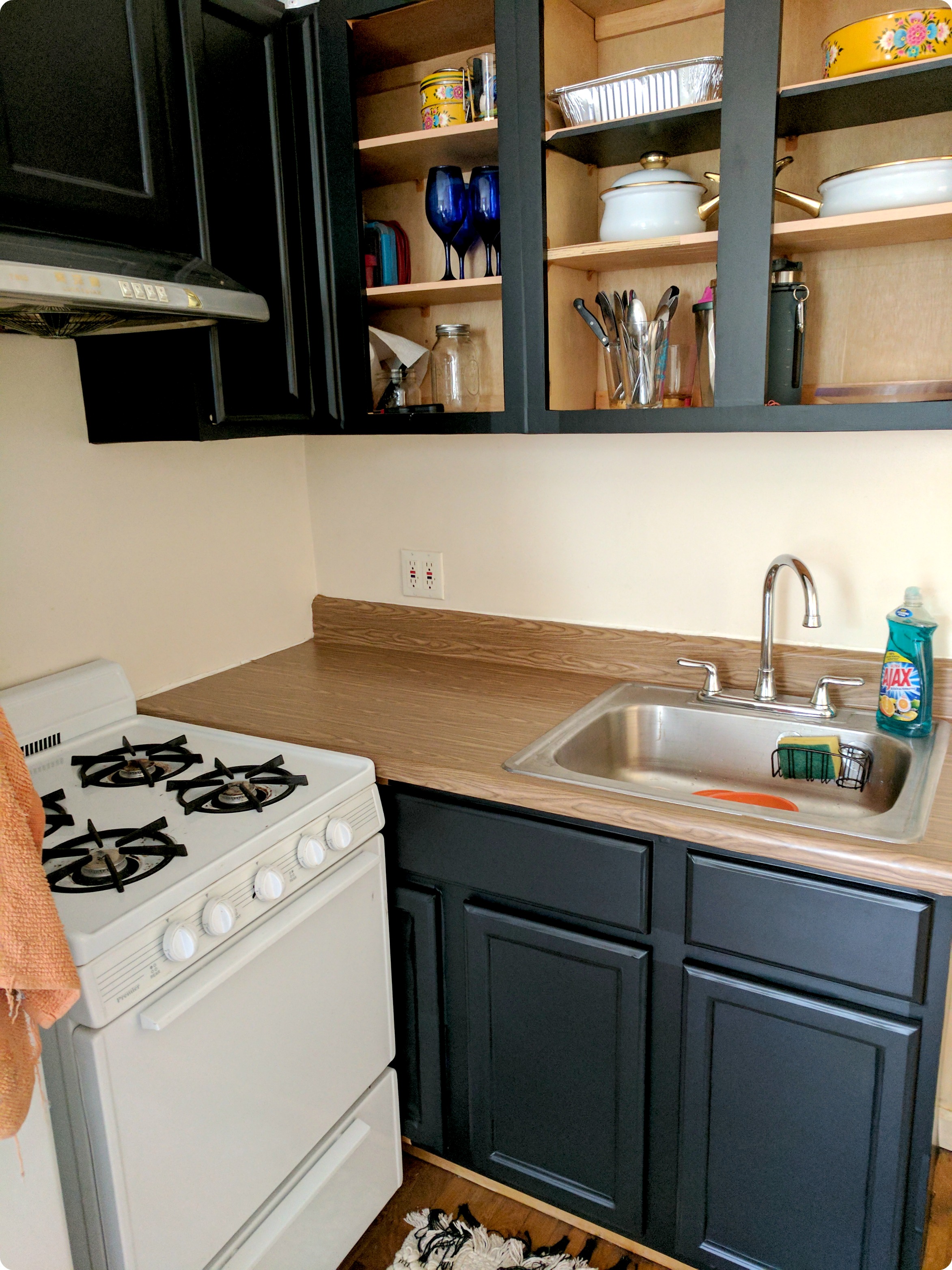
THINGS TO WATCH OUT FOR
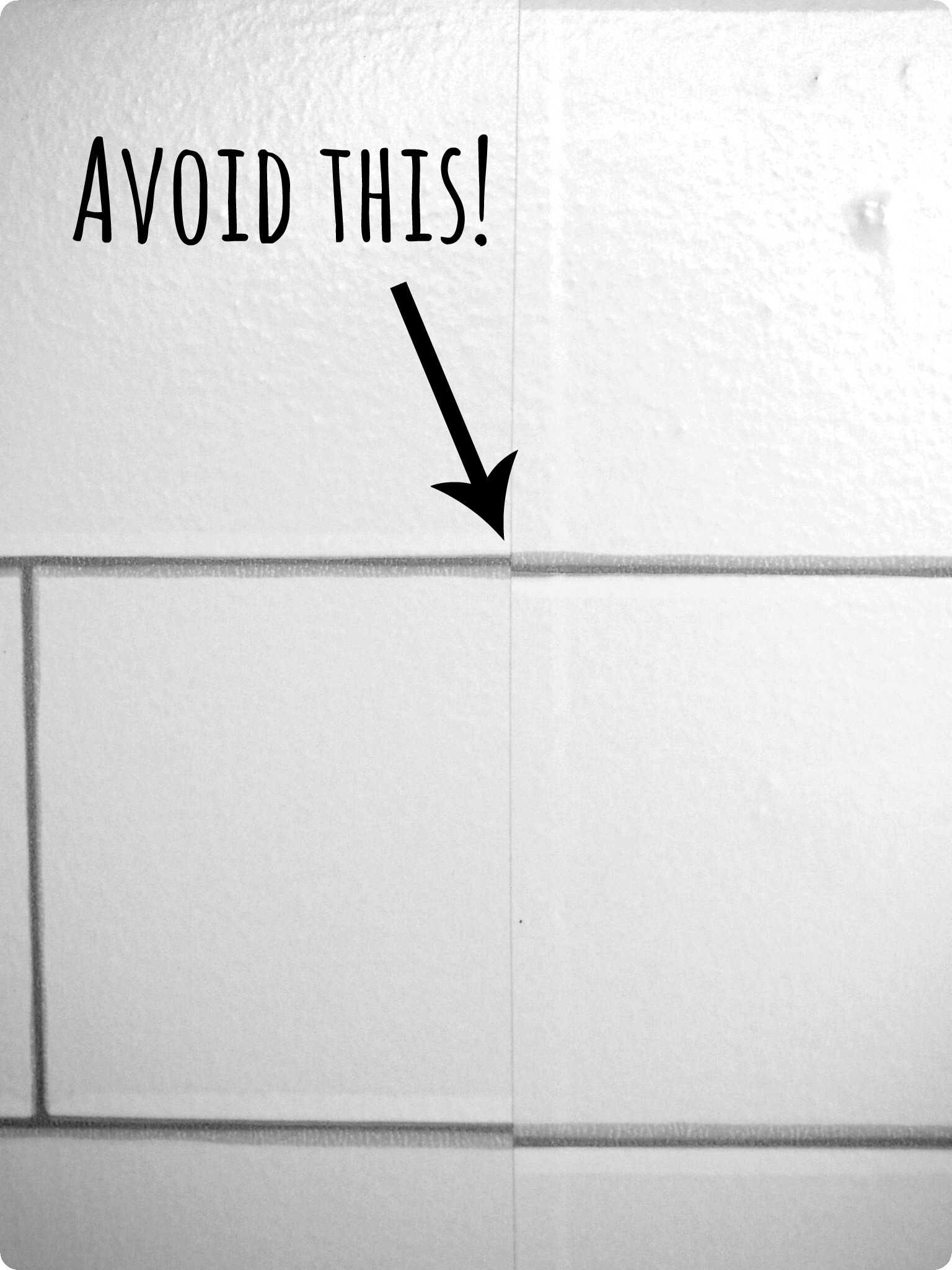
FINISHING THE BACKSPLASH
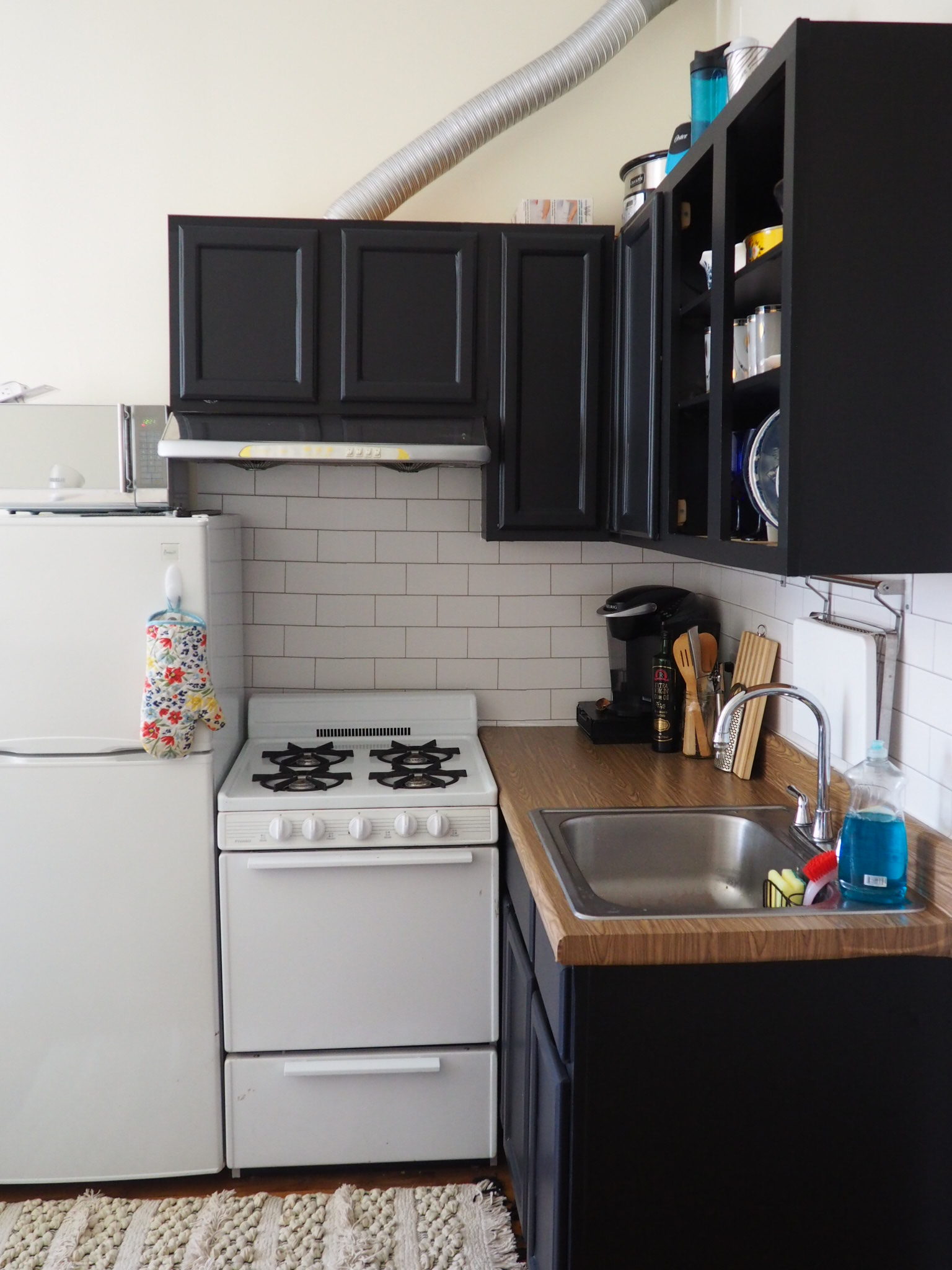
so is this really “100% removable”?
When the time comes to move out of this apartment, all of this Contact Paper should peel right off. I would recommend using the hair dryer at that time as well though, as I’ve learned that it softens the adhesive. At worst, I’m planning on bringing up a few chips of paint with the backsplash paper, but it won’t be anything that a small paint brush and a $2 sample jar of paint can’t fix!
my total contact paper kitchen renovation investment
Overall this project cost me around $150 max, and I think the result speaks for itself. It’s not ideal or the classiest to have a kitchen completely covered in Contact Paper, but I think it sure as heck beats what I was given to work with, so I am very happy with how it turned out. At the end of my time in this apartment there will be nothing to repaint or repair, and I’m not putting money into tiling that I’ll never see back. If I get sick of it (or burn a hole in some section more likely) it’s a quick fix to replace or remove, and in the meantime it adds some sophistication to my tiny space!
Let me know what you think below, I’d love to hear thoughts and see how you’re “renovating” your rental space.
If you’re looking for Parts 1, 2, or 4 of this series, check them out!
Kitchen Update Part 1: Cabinets
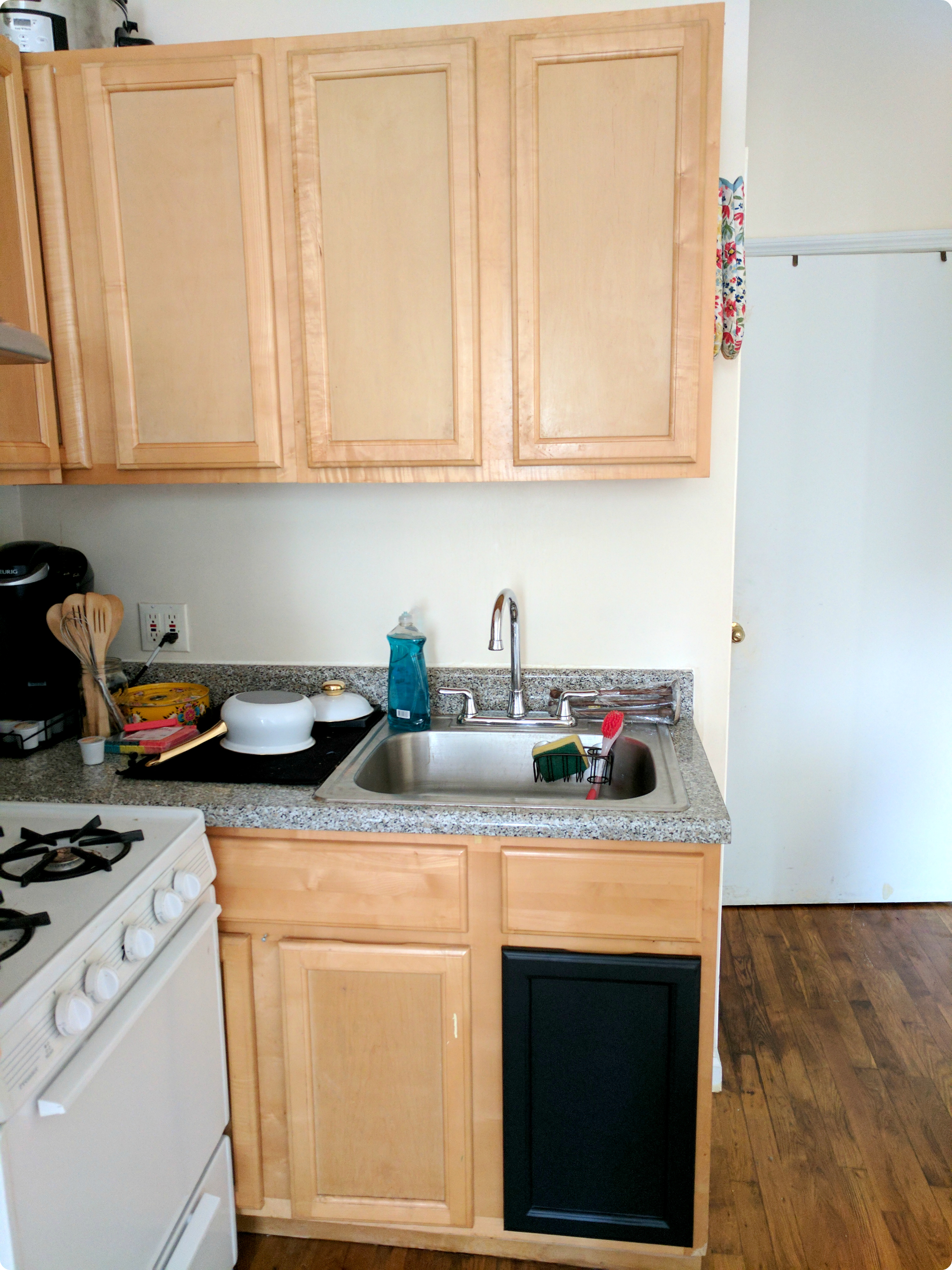

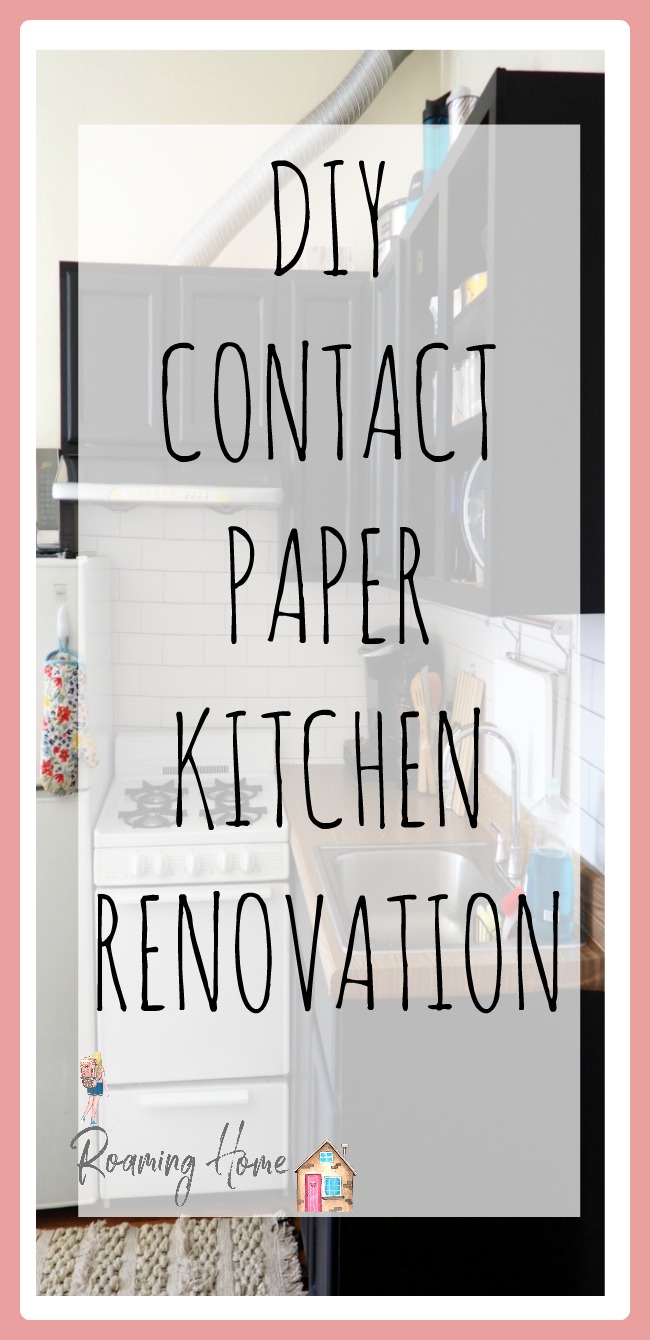
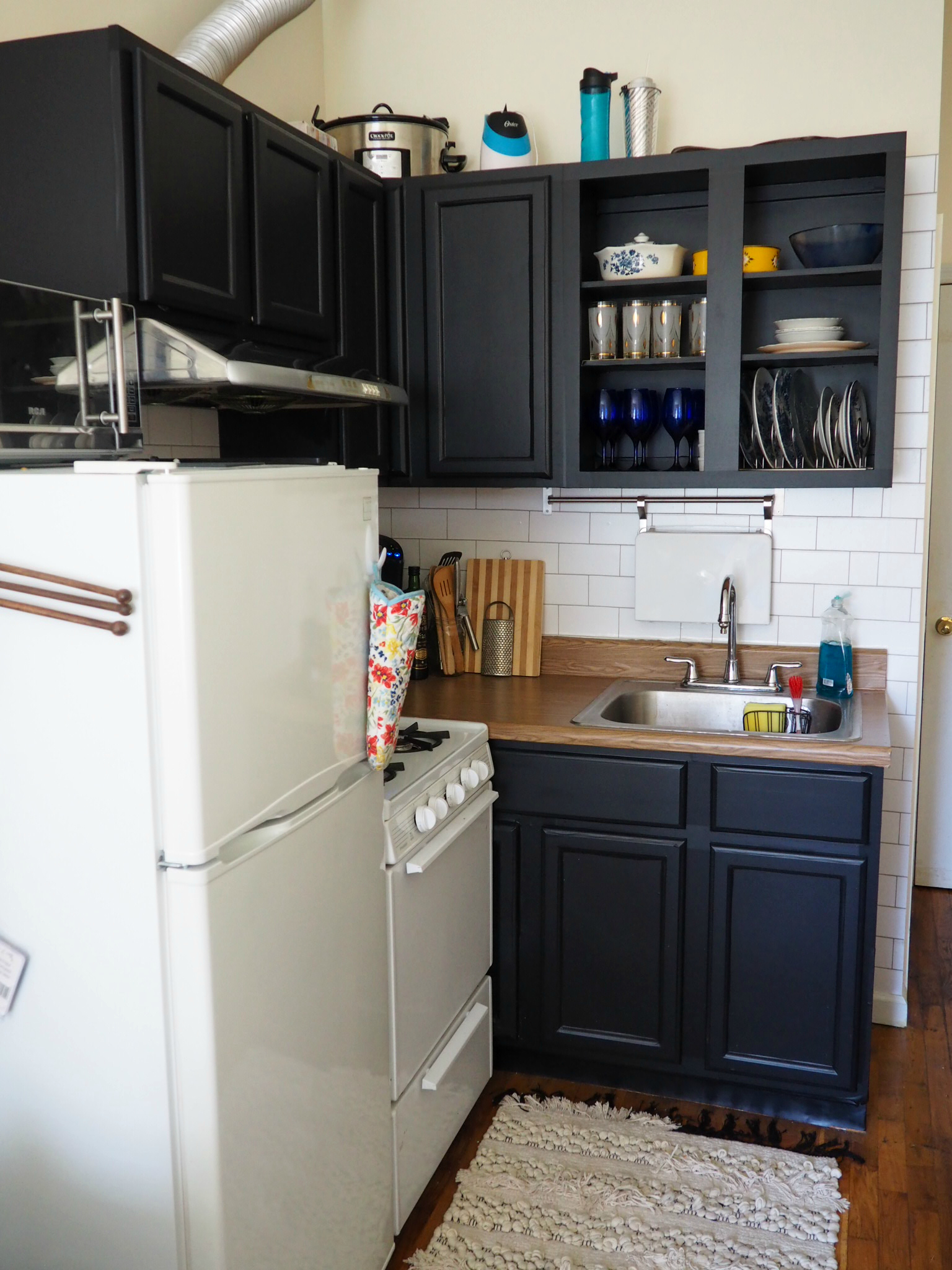

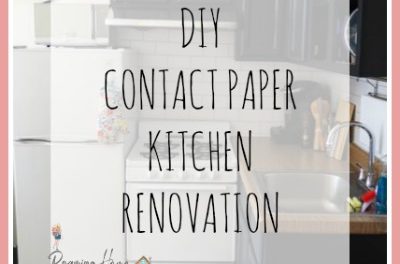
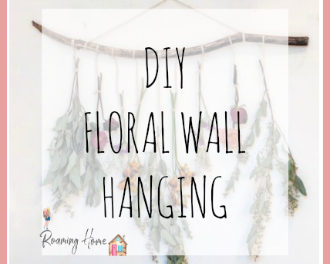

Keep up the fantastic piece of work, I read few blog posts on this web site and I believe that your site is real interesting and has lots of great information.
Holy crap you weren’t kidding! It’s so hard to find posts about this! Your vision is totally my vision on a place I’m moving into! I’m just curious if you’ve moved yet and if the contact paper hurt the cabinets at all? Im actually moving into a newly renovated place but it’s still not my jam. lol! So I want to jazz it up.
Hi Christine! I haven’t removed anything yet, but I have pulled back the corner of one cabinet to check, and it didn’t seem to remove any of the finish- and I’m about a year out by now! When I do remove everything I’m planning on using a hair dryer and will have a bottle of Goo Gone on hand. Good luck with your new place!